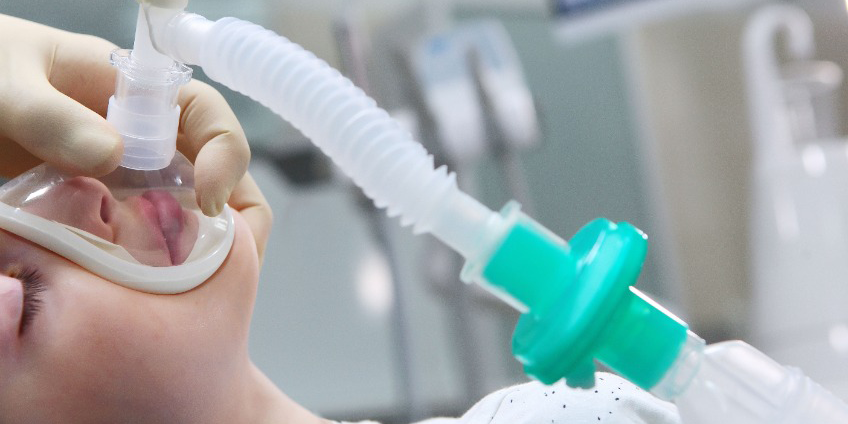
Over the years, anesthesia has become increasingly common in most surgical procedures — even minor ones. In fact, approximately 40 million surgical procedures utilize an anesthetic each year. Some procedures, such as dental extractions and implants, require anesthesia, regardless of the patient’s preference.
Medical professionals, particularly anesthesiologists, are experts when it comes to performing these procedures, but risks remain. Whatever the circumstance, knowing what airway management tools and techniques to employ is critical for protecting patients during anesthesia and preventing conditions such as aspiration or harmful debris clogging the airway and lungs.
Airway complications
Though they occur infrequently, airway management complications during anesthesia can have a significant impact on patient morbidity and mortality. Developments in medical equipment and patient care techniques in recent years, such as novel oxygenation modalities and second-generation supraglottic airway devices (SAD) have made anesthesia much safer, but many other non-technical airway management factors can have horrible consequences if not addressed appropriately.
Maintaining consistent, effective communication among providers about decision-making during a crisis is key for preventing and mitigating airway emergencies and “cannot intubate, cannot oxygenate” situations.
Airway complications during anesthesia are often attributed to these common factors:
- Poor planning and communication, and lack of teamwork and situational awareness.
- The unavailability of a surgeon to act quickly for a surgical airway transition, resulting in a delay in airway transition.
- Aspiration, often involving tracheal intubation.
- Poor assessment of patient and operation risk.
- Failure of routine airway techniques – when an initial airway management technique fails, the risk of failure of subsequent techniques becomes even greater.
A particularly dangerous complication that can sometimes result from poor airway management during anesthesia is pulmonary aspiration. This occurs when pharyngeal secretions, food or drink, or stomach contents enter portions of the respiratory system, traveling to the trachea and, eventually, to the lungs.
During lung ventilation, several respiratory complications, such as airway traumas and inflammatory effects can occur if a provider is using incorrect ventilator equipment or equipment settings. Patients may also suffer from a ventilator-induced lung injury (VILI), a type of acute lung damage that sometimes occurs during mechanical ventilation. Two telltale features of VILI are lung strain and atelectasis, or loss of volume resulting from decreased gas in a portion of the lung.
Airway management devices
Providers should exercise significant discretion when determining the right airway management device to use for certain patients undergoing anesthesia. Factors such as the patient’s age, weight and preexisting health conditions are incredibly important when choosing equipment.
General anesthesia requires a state of deep sleep or unconsciousness, where the patient has no awareness or sensation. Though it’s possible for a patient to maintain spontaneous respiration on their own, many patients require support from airway management devices, even suction devices, to breathe during anesthesia. Breathing support can sometimes mean just using a chin lift or jaw thrust to help with opening the airway, but it usually involves placing an endotracheal tube (ET) or supraglottic airway devices (SADs) to allow for effective delivery of oxygen and anesthetic gases.
SADs are used for a variety of modern airway management scenarios during anesthesia, including for obese individuals, individuals with high Mallampati scores, and other risk factors, as well as during prolonged procedures such as abdominal surgery.
Airway management methods
Different patient health and airway factors must be considered when choosing the right airway management modality to implement during anesthesia. Preoxygenation should be employed in all patients for whom difficult airway management is anticipated and for all patients undergoing general anesthesia. However, no method of preoxygenation will be successful if the airway becomes obstructed. For this reason, providers must do everything they can to maintain a clear patent airway throughout all stages of oxygenation.
A common airway management modality that can have utility in pediatric patients, as well as some adult populations, is pharyngeal oxygen delivered via the laryngoscope. Some other methods for delivering oxygen during difficult airway management scenarios include the use of a simple nasal cannula once the patient is unconscious, or buccal oxygen. Both of those methods can prolong safe apnea time for patients, allowing for prolonged blood and tissue oxygenation during anesthesia.
Staying prepared
To ensure you’re prepared for a variety of airway complications that may arise during anesthesia, it’s critical that you and your team remain knowledgeable about different types of anesthesia and associated surgical procedures, as well as the airway management methods they require.
Additionally, staying informed about how different patient health factors impact the safety and efficacy of airway management modalities will allow for more successful surgeries, and healthier patient outcomes overall.
Don’t forget that dental patients under anesthesia need suction too – learn how to prevent aspiration.
Editor's Note: This blog was originally published in November, 2022. It has been re-published with additional up to date content.















